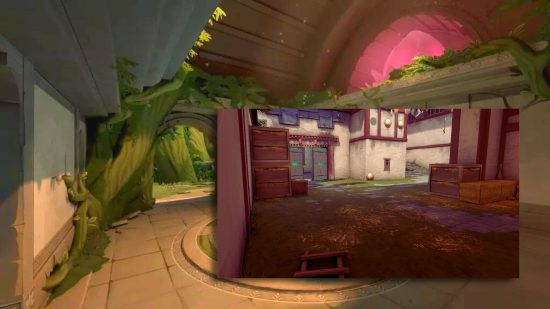When Riot lifted the curtain on Haven in 2020, the Valorant whisper network started buzzing with praises; someone had finally broken away from the typical FPS game layout. The forgotten monastery became professional players’ favourite map, but some were still on the fence about the three sites. It seems Riot is sure about the new layout. Enter Lotus, the worst nightmare for dedicated players of Valorant episode 6.
Haven is popular among professional players, but it’s simply not cut out for fast-paced ranked games. Now, having two maps with three sites in a map pool of seven is a disaster waiting to happen. The triple-site aftermath should unfold in a few weeks, shaking up the Valorant meta for the worse.
Valorant’s triple-site maps are a terrible idea
Maps with gimmicks like dual-mid or triple-site work well in pro play. You spawn with a team of five capable of executing the complex strats. Months of practice, coordination, and communication act as catalysts. But, when you play Valorant to rank up quickly with random players, communication isn’t always warranted, let alone strategising.
Haven isn’t just popular among pros. It’s a favourite. The map is heavily attacker-sided, with 52% of matches going in favour of attackers. You’re set for the rest of the game if you pick attacking first on Haven and bag the majority of rounds. For example, if the half wraps in a 9-3 score line at best, defence feels like a picnic.
But casual players don’t have the luxury of picking sides. If you get thrown into the game on defence, losing the majority in the first half is enough to break morale. Comeback potential on such maps is high, but it’s tough to keep hopes up of random players ready to tab out of the dull game. GG Go Next!
Breeze is out, despite being newer than other maps. But Haven stays, along with Lotus, a map that bears a similar threat of three sites. Lotus, however, isn’t just big; it’s also more rambling, with ample rat corners and revolving doors. Now, players in ranked will have to stroll on two large locations without communication. We can already feel the silence ringing in our ears; Lotus doesn’t only sound boring, it’s a map where solo players may never see the green winner screen.
FPS maps must provide balanced grounds for competition. But, three-site maps naturally benefit the attackers, no matter how easy it is for defenders to rotate. Holding two sites is a tall order; now imagine doing it on three. Attackers can march into an empty site on the back of an intel-gatherer. Conversely, defenders must read patterns, identify a mock execution, and run across the map carrying a knife.
Winning as defenders on Lotus and Haven requires a well-thought-out composition. In competitive Valorant, a few players care enough to hover on their desired agents and put thought into the lineup. In contrast, attackers rely only on an initiator to help gather early information. This imbalance was negligible on one site, but two sites are a recipe for a sloppy Valorant meta.
Large maps in competitive Valorant slow down the pace of the game. On the other hand, maps like Icebox, Bind, Split, and Fracture are all excellent. But Riot needs to get the layout for large maps right. Ascent is a perfect example of a map that’s more on the larger side and fits right into the Valorant pool.
It’d be interesting to see how serious Valorant players adjust to the labyrinth that is Lotus. They may need luck more than aim!
Valorant map nine is already making waves, but winning won’t be easy. Make sure you’re equipped with the best Valorant crosshair codes to prep for Valorant episode 6 rank grind!

